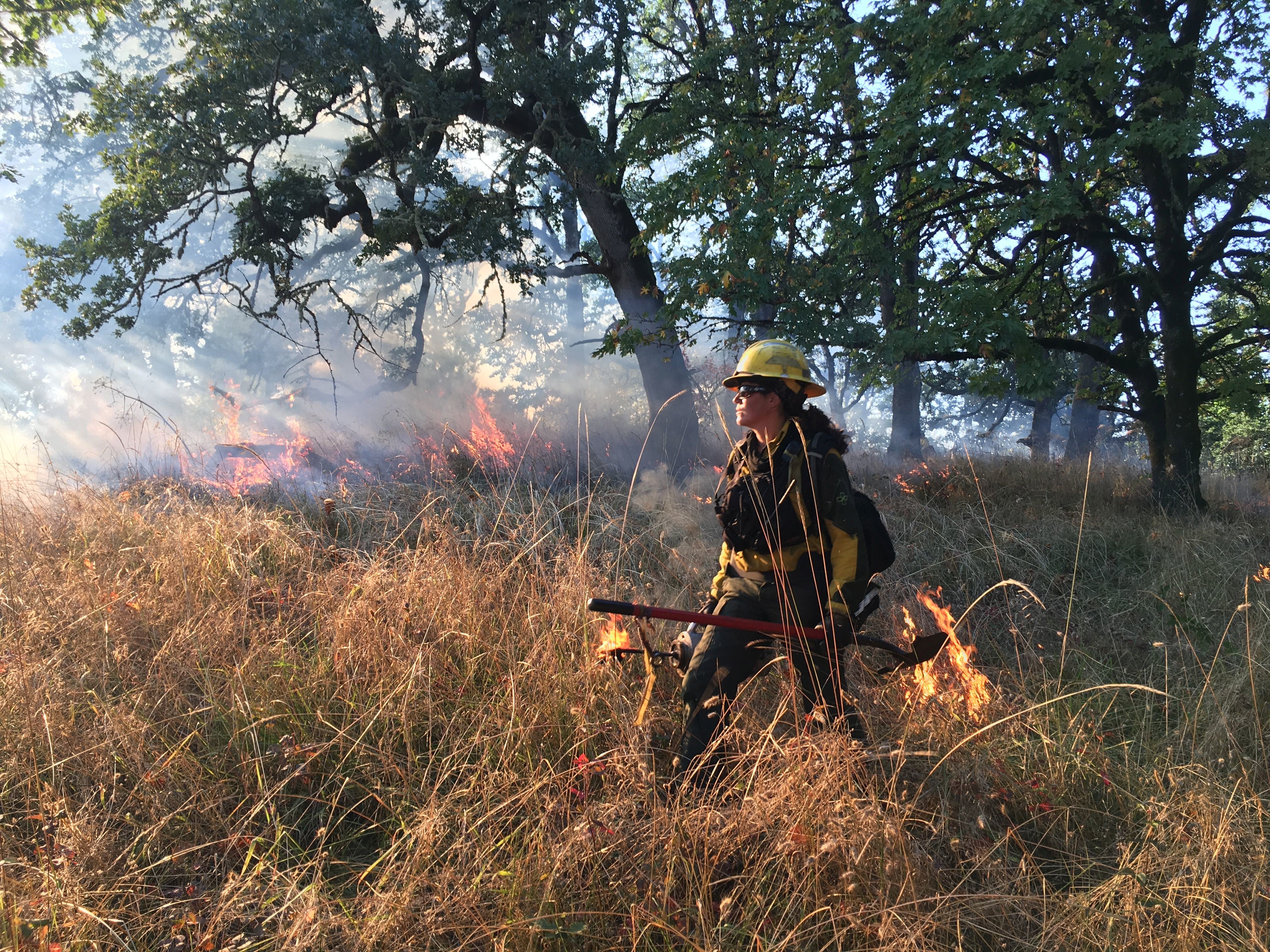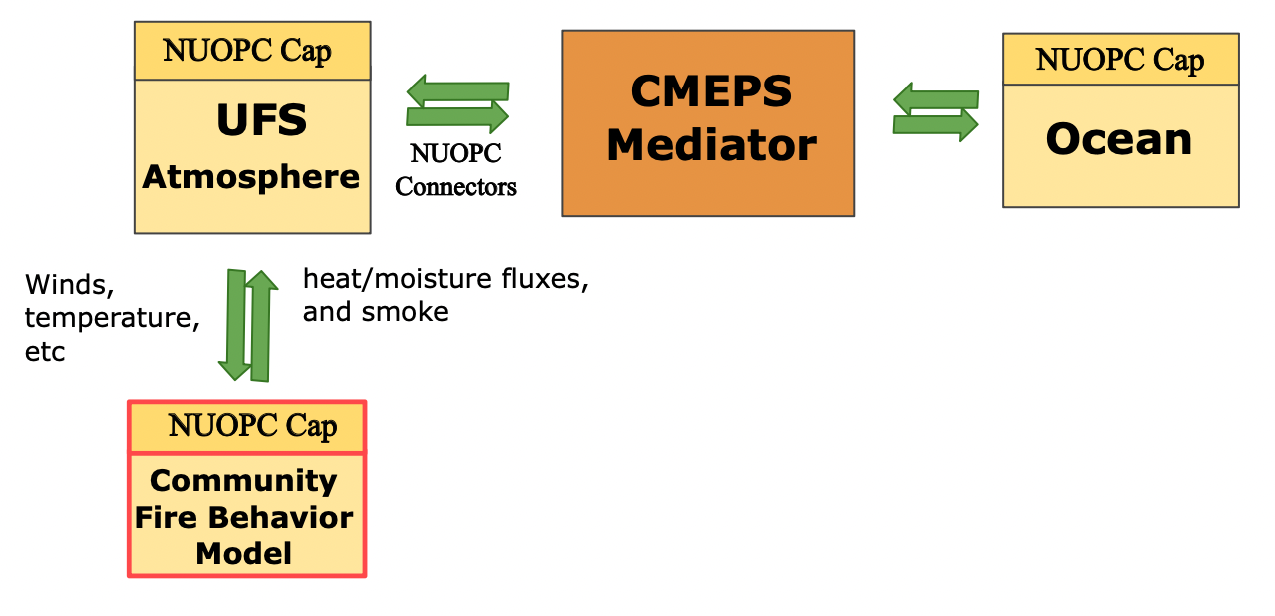The Community Fire Behavior Model
Simulating the Evolution of Wildland Fires

Contents

Caption: (a) A comparison of the fire perimeters after simulating the Cameron Peak fire after 27 hours of simulation. The fire perimeters of the WRF-Fire and standalone fire behavior models are represented by blue and orange lines, respectively. Time series of (b) mean wind at the fire front and the (c) cumulative burned pixels for the same simulations. The atmospheric models run on a 3 km grid spacing, while the fire behavior is simulated on a 100 m grid to better represent the complex terrain and the impact of heterogeneous fuels (as described in Anderson, 1982) on the fire. Despite the use of different atmospheric models, the fire perimeters are similar.
Overview
The Community Fire Behavior model simulates the evolution of wildland fires. The model requires the definition of a grid with characterization of the fuels and elevation to simulate the fire evolution. The fire physics of the current version of the model (v0.2.0) is based on the WRF-Fire physics. This has allowed us comparative testing with WRF-Fire to ensure a proper implementation of the model (Jimenez y Munoz et al. 2024). The Community Fire Behavior model can be run offline, reading external atmospheric data (from WRF at this moment), or online, coupled with an atmospheric component to account for fire-atmosphere interactions.
In order to couple it to atmospheric models, the Community Fire Behavior Model makes use of the Earth System Modeling Framework (ESMF) libraries. To this end, the fire model is implemented in a National Unified Operational Prediction Capability (NUOPC) as an interface to connect with other earth system models.
The source code of the Community Fire Behavior model is in a Github repository.
The Community Fire Behavior Model NUOPC has been coupled to the Unified Forecasting System (UFS). The code is publicly available via the UFS community repositories which include the Short Range Weather App to allow for automatic simulations of fire-atmosphere interactions at the regional scale with UFS.
Documentation
The technical description of the model can be found in Jimenez y Munoz et al. (2024).
The User’s guide is available online and includes documentation to run the offline version of the Community Fire Behavior model and the online version coupled to UFS.

Simplified representation of the UFS to illustrate the coupling with the Community Fire Behavior Model NUOPC.
UFS Implementation
The Community Fire Behavior Model has been coupled to the Unified Forecasting System (UFS). This required coupling the fire model to the UFS-Atmosphere in order to account for fire-atmospheric feedbacks. The UFS-Atmosphere passess the winds and other near surface variables that are used to propagate the fires. In turn, the fire model feedback heat and moisture fluxes as a result of the combustion process. Smoke is also released and advected and diffused by UFS as a tracer.
Contact
Please direct questions/comments about this page to:
Pedro Jimenez Munoz
Proj Scientist III